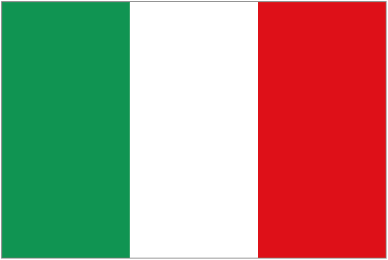
Translationes
Call for papers
CALL FOR PAPERS
Translationes
8-9 (2016-2017)
Literary Constraints, Potential
Translations.
(Re)Interpretation, (Dis)similarities,(Re)creation
In
a context where limitations and/or frontiers seem to disappear to allow for
both a freedom of movement once only dreamed about and an opportunity for
multilingualism as a vector of the openness towards the Other, our call for
papers is an invitation to reflect upon constraints and their importance in the
field of literature and of literary and specialised translation. On the one
hand, constraints impose rules and conventions, and on the other, they spur
efforts to overcome them. As such, they continue to be a privileged instrument
when it comes to evaluating the creativity of writers and translators.
Whether
we talk about fixed form poetry (the sonnet, ballad, or rondel), about
experiments of the Oulipo type (lipogram,
palindrome, tautogram, S+n texts, imposed letter, etc.), about the subversive
literature produced under totalitarian regimes, about comics or subtitling,
constraints, accepted or imposed, have allowed authors and translators to turn clichés
on their heads, to give a new lease of life to forgotten words, to rediscover
themselves, and through all this to illustrate the well-known Baudelairean comment:
Because the form is constraining, the idea shines forth more intensely
[1]
(Baudelaire, Lettres 1841-1866).
The question is,
what strategies will the translator, this shadow writer, resort to? What
constraints will s/he give in to when translating constraints-conditioned
literature and what will s/he do to uphold the eternal pact between author and
reader? As somebody who always oscillates between faithfulness to and freedom
from the source text, how will s/he evolve in the circles closest to the translated
work, the author, the authors thinking and technique?
We
need to also wonder about the specialised texts. While a literary author would
like to see his/her work published in as many foreign
languages as possible and, why not, the very next day after the publication of
the original, the balance sheets of a big company can only be translated by
respecting a different set of constraints: signing a confidentiality contract,
meeting a rigorous publication deadline, etc.
As for the audio-visual translation,
apart from the intercultural challenges present on or beneath the surface of
any text, the translator has to also keep in mind constraints regarding the
length of subtitles as well as their connection to image and sound.
In
the case of literary translations, the translators faithfulness could be an
equivalent of the authors creativity, and constraints could help translators produce
successful adaptations (Bastin, La notion dadaptation en traduction, Meta, 38, 1993). It is, however, important
to remember that one would translate differently
a piece of fiction, a poem, a religious text, and a technical one respectively
(Oustinoff, La traduction, 2003). The
type of text is the decisive factor in the translators decision to adopt a
source- or target-oriented strategy. We should also keep in mind that the types
of text and/or translation strategy adopted imply factors that can become, in
turn, new constraints to be taken into consideration: the submission deadline, levels
of specialised vocabulary, clients
requests (in the case of specialised translation), socio-cultural elements, audience
expectations, the publishers standards (in the case of literary translation).
However,
if there are similarities between texts containing formal constraints and their
sui-generis translations, can we draw
the conclusion that there are as many translation techniques as there are
writing techniques?
Should the translator focus on the mechanisms of text production
or privilege the immediate reading pleasure (Collombat, LOulipo du
traducteur, Semen 19, 2005)? Whether
s/he translates the authors intentions into another language (the case of
literature) or into a professional jargon (irrespective of the field the
specialised text belongs to), idiomaticity seems to be the ultimate objective
of the translators endeavour. In other words, the more extended the field of
the constraint that has to be translated, the more bound the translator is to
take on the role of creator of meaning by using all linguistic and cultural
means at his disposal. Under these circumstances and by comparison with
previous centuries, what are the contemporary aspects of the concept of text
re-creation through translation? And if we generally agree that writing begins on
a blank page, where does translation begin?
(Re)interpretation,
(di)similarities, (re)creation, these are just a few avenues of analysis and
reflection proposed by the 8th issue (2016) of the Translationes journal. Contemplating on
the causes and effects of translating texts with formal constraints we may end
up confirming the idea that translation is nothing but an art of constraint
(Keromnes, Traduire: un art de la contrainte, Traduire, 224, 2011).
Calendar
October 1, 2016: Deadline
for submitting articles in electronic format to: isttrarom.translationes@gmail.com
October 1-29, 2016: Blind
peer review of submissions by two reviewers from the scientific and editorial
board or by external reviewers.
October 30, 2016: Notification
of authors regarding the conditions of acceptance or rejection of submissions. Return of submissions together
with evaluation reports.
November 15, 2016: Deadline
for resubmitting articles finalised according to the reviewers comments and
the journals style sheet.





